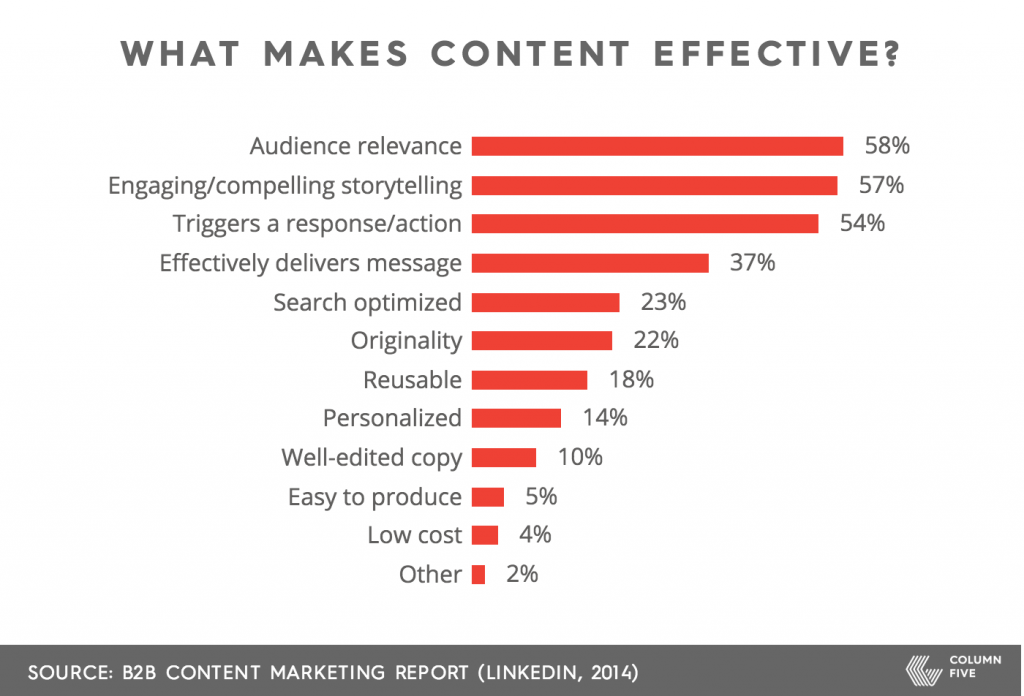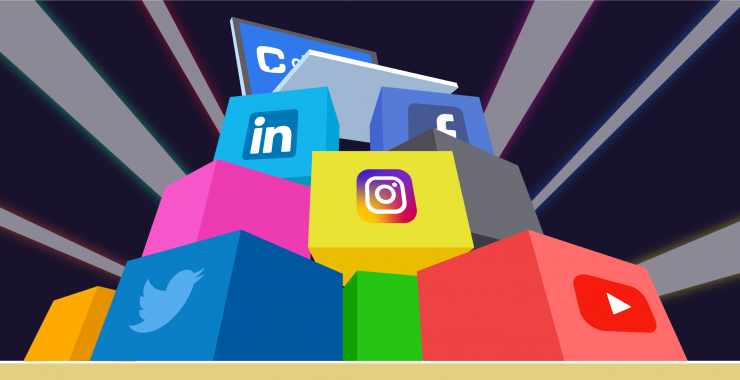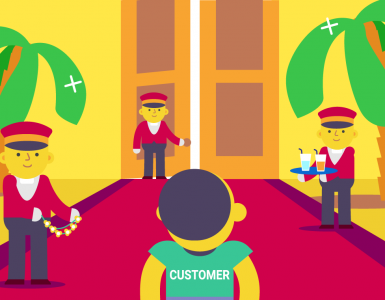Though LinkedIn is seen as the one above all for generating B2B leads, the fact remains that over 43% of B2B businesses have acquired a client through Facebook.
LinkedIn isn’t the only place to grow your SaaS business. You could grow your business just as easily on Facebook or Twitter, if you know how to do it the right way.
There’s no doubt that social media can work for SaaS businesses. It just needs a change of strategy compared to what you overwhelmingly see for B2C.
And this post is all about strategies you can use to grow your SaaS business with social media.
Target with the right ads on Facebook
When FieldBoom took to Facebook to advertise its offerings, they asked prospects a simple question through an ad –”Frustrated with SurveyMonkey?” and offered themselves as a viable alternative.
It was easy for FieldBoom to talk about SurveyMonkey since there were over 200,000 SurveyMonkey Facebook fans at the time.
When choosing to target people on Facebook with ads here’s what you need to keep in mind.
Decide on a business objective from the list below:
Brand awareness – Increase awareness of your brand by improving product recall rates.
Reach – Maximize the number of people who see the ad.
Conversions – Get people to visit your website and sign up. There could be other conversion goals like app install or form filling.
You can measure conversions with Facebook pixels.
For FieldBoom the primary objective was to broadcast to the world its birth as an alternative to SurveyMonkey.
To target the right audience you can use Facebook ad tools that will save you time and money.
Sidenote: If you’re running ads and want them to be user-friendly and less interruptive, use various Facebook ad templates that will make your in-feed ads efficient.
Saas can be boring, your social media posts should be interesting
Mac App Advisor is a tool that gives people app recommendations for their Macbook.
To get traction for their new tool, the Mac App Advisor team took inspiration from the office cat – Hoover. The idea was to present the functionalities of their product to a larger audience in a comical and easily relatable way.
So they went ahead with their office cat Hoover. Who doesn’t like cats?
With a series of posters, images and other assets that showed the cat giving app recommendations, they took the internet by storm.
They got lucky after Ryan Hoover, founder of Product Hunt noticed the banner on Twitter, left a positive comment and retweeted it.
This generated a lot of exposure for the product resulting in hundreds of thousands of people checking out the product and buying it. Don’t forget to craft stunning social media posts to connect better with your audience.
Research suggests that brands should embed social media feeds on websites, as this can boost dwell time by up to 300% and engagement by 50% for social media campaigns.
Gain trust through user-generated content (UGC)
Consumers trust other consumers. And that trust extends not only to reviews but also to User Generated content. With tons of great video testimonial software tools available, it is no surprise that Bazaarvoice found that 51% of millennials and 34% of baby boomers would even trust recommendations coming from strangers. A testimonial or review online no matter who posts it is held with equal regard as to a recommendation from a close friend.
92% consumers say that more than any form of advertising they rely on UGC.
To gain trust use this form of social proof can be very effective. You could use customer testimonials, customer success stories or do a podcast with a customer and ask him or her open-ended questions about their experiences with the brand.
A LinkedIn survey asked marketers as to what they thought made effective content.
The top three responses were relevance to the audience, storytelling and content that triggers action.

Storytelling is the key to getting your audience to pay attention.
Here’s how UGC can help your brand by telling its story.
- Higher brand engagement: Since UGC comes directly from real customers it holds great potential to get people commenting. As a result, likes, comments and mentions accrue. This results in higher engagement.
- Increased conversion rates: UGC can help push your prospects to become customers. The average customer refers to 9 different sources before taking a decision to purchase something. Testimonials, reviews and other user generated content , puts prospects minds at ease. Here’s why UGC can help – photos, videos, and online reviews all broadcast customer experience. And this can move the scales in your favor. Your prospects go through testimonials and reviews to ensure that the particular product is an ideal fit for them.
- Building brand trust: Building brand awareness? Use UGC. UGC is a great indicator that customers love your brand. Millennials consider brands that they feel are trustworthy and authentic. It establishes the credibility of your brand as a go to place. Real people are posting about their experiences with the brand. For the prospect, this signals that the brand is authentic. The pictures and videos all show the level of ease and comfort people experience with the brand. This builds trust and authenticity that establishes your brand’s place in customer’s hearts.
For a media that offers so many advantages UGC is remarkably easy to generate.
A SproutSocial study found that 75% of your customers are happily sharing a positive experience they had with a brand. All you need to do is ask.
Providing a good customer experience comes with its set of benefits. It boosts the odds of a customer making a purchase with a brand by 70%.
It’s a simple two-step process. One – ask your customers to create content (that’s easy). And two, repurpose it on your own brand social media pages. You can also embed Instagram feeds for free on your website to showcase UGC directly from your customers, enhancing trust and engagement.
Any discussion around UGC cannot exclude Starbucks. The beverage brand has it nailed down to an art. With the white cup contest, it asked customers to create doodles on coffee cups and send it to them.
People participated in overwhelming numbers across social media channels like Facebook, Instagram and Twitter. By asking people to doodle on coffee cups Starbucks found a common string that connected Starbucks with people.

LEGO has a section called lego ideas on their site where they showcase impressive builds that customers of LEGO cobbled together using nothing but LEGO pieces.
These design ideas are voted up or down depending on the level of creativity involved. This provides a rich emotional satisfaction to people who submit ideas and those who view it.

There’s no reason why you can’t use similar ideas for B2B.
Here’s an example.
Everybody knows Adobe’s prowess as a design tool. They could fill Facebook with video ads showcasing their products and tools.
But instead Adobe chooses to go with user generated images and designs that customers are creating with Adobe.

Within a few hours of posting it generated hundreds of shares, comments and thousands of likes.
One thing to always remember is your social media voice should reflect your brand voice.
Provide better social customer support
Social media is quickly doubling up as an avenue to request and provide customer support.
Customers know they can get instant support from the social media page of a business. All they need to do is just ask.
Improve the quality of support by monitoring messages across social media as they happen.
The goal is to reduce the trouble customers have to go to get information so as to improve their experience interacting with your business. This has a positive impact on customer retention rate. In fact, studies show that if customer problems are dealt with proactively at the beginning itself, churn reduces to a trickle. More money in the bank.
Ideas to better your social customer support:
Respond quickly
Speed is the name of the game. On social media customers expect a response within the hour for queries and issues raised.
Get the “Very responsive to messages” tag.
All it takes is responding to customers within 15 minutes and you get the “Very responsive to messages” tag. This builds a sense of assurance among customers that the brand is responsive and questions won’t go unanswered.
Don’t wash your inners in public.
There are issues that can be solved in public and there are ones that require a soft touch.
If agents feel that the issue is of the second nature, that should be solved in private.
The product needs to be promoted throughout its lifetime.
Remember to interact with the people that show interest in the product, as well as gather feedback and figure out more ways to improve.
Use automation.
Taking your social media strategy to autopilot will help you get better results with less time spent. For example, scheduling your social media posts and setting up automations, will take care of things even if you are unavailable.
Similarly, use of LinkedIn automation for getting more effective leads, can bring profitable results with less efforts. Automation helps minimize the tasks on your end, and make things work on their own in a way you want.
Using LinkedIn automation for generating more effective leads can yield profitable results with less effort. Automation minimizes the tasks on your end, allowing processes to run smoothly and efficiently. Additionally, incorporating a LinkedIn feed on website can enhance your online presence and engagement, further boosting your lead generation efforts.
Moreover, you can boost your online presence and content engagement better than the manual process by adapting buffer alternatives in automation process. So, it not only saves you time, but also gives you the best results in terms of engagement, conversion and creating authority. Also, if you use it right, your email list can be used to get people to follow you on social media, making it possible to reach a wider audience.
Concluding thoughts
What do you think of the examples shared above and my tips on how you can grow your SaaS business and have an increased following?
By targeting prospects with the right ads, building interest in your product through interesting (and sometimes funny content), using UGC to generate trust and providing great customer support you’ll be able to grow your SaaS business on social media.
Relevant content like UGC speaks to customers on a deeper level. Being present on social media channels and extending support to customers any time of the day or night forges an emotional connect that breeds loyalty.








